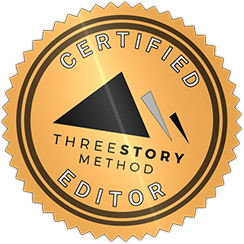Welcome!
The term “mastermind” often conjures images of people huddled around a table, secretly meeting in a locked room with plans of taking over the world. While a mastermind might sound like something a supervillain would use as a weapon in a spy thriller, it’s not dastardly at all.
The word first appears in the early eighteenth century, which means Mr. Franklin would have never called his group a mastermind, even though that’s what the Junto had become.
The most basic configuration involves a small group of people who meet regularly around a shared goal or passion. Each person, at each meeting, contributes something to the group by either bringing a problem or helping to solve someone else’s. This is why a mastermind is not the same thing as a class or course, even though many use the terms interchangeably.
The power of the mastermind is having like-minded folks who are headed in the same direction, helping each other get there.
Mastermind groups tend to be small—or should be. Large groups, such as Facebook groups, can have elements in common with a mastermind, but once the number of the group swells beyond 30, it ceases to be a mastermind in the traditional sense.
In this book, I intend to show you how joining an author mastermind can save you years of frustration and wasted money. You’ll see how to succeed in both the craft and business of being an author by collaborating with others taking the same journey as you. You’ll discover the secret power manifested in a group with a shared purpose while developing meaningful and long-lasting relationships along the way.
I’ll show you what to look for when joining a mastermind, how to form one, and how I run mine.
Before we jump straight to the secret powers of the author mastermind and the benefits you can expect to gain, I’ll show you a few examples of the science behind group learning. Then, we’ll examine a brief history of the modern mastermind model before I share with you how I spent decades as an educator, creating and refining mastermind groups.
Critical Friends
A Critical Friends Group community is a particular variety of Professional Learning Community (PLC), and Critical Friends Group® is a registered trademark of the NSRF® organization. CFG® communities consist of 5-12 members who commit to improving their practice through collaborative learning and structured interactions (protocols), and meet at least once a month for about two hours (from an FAQ at NSRFharmony.org).
Later, I’ll share my experience of being in a Critical Friends Group in the early 1990s and explain how that fundamentally changed what I was doing in the classroom.
Psychological Science
In an article titled, “Sharing Makes Both Good and Bad Experiences More Intense,” on PsychologicalScience.org, author Eric Boothby writes, “Undergoing an experience with another person — even if we do it in silence, with someone we met just moments ago — seems to intensify that experience, according to new research published in Psychological Science. The research shows that people who share experiences with another person rate those experiences as more pleasant or unpleasant than those who undergo the experience on their own.
“‘We often think that what matters in social life is being together with others, but we’ve found it also really matters what those people are doing,’ says psychological scientist and lead researcher Erica Boothby of Yale University.
“When people are paying attention to the same pleasant thing, whether the Mona Lisa or a song on the radio, our research shows that the experience is much more pleasurable. And the reverse is true of unpleasant experiences — not sharing them makes them more pleasurable, while sharing them makes them worse.” (from https://www.psychologicalscience.org/news/releases/sharing-makes-both-good-and-bad-experiences-more-intense.html)
You’re probably not surprised to learn that we’re social animals and that we do most things better in groups. When I was teaching my graduate course on writing and publishing at John Carroll University, this was something I kept in mind as I developed the curriculum. More on that experience later.
National Mentoring Research Center
In January 2016, Gabriel P. Kuperminc, of Georgia State University, wrote a paper on the power of group mentoring. He discovered that “group mentoring programs can produce an array of positive outcomes for youth (behavioral, emotional, academic, etc.) and seem to be effective across a wide range of youth participants (ages, ethnicities, etc.).”
In addition, “Group mentoring programs offer a context for activities that develop mentee skills, change mentee attitudes, and offer positive peer interactions; and that these processes may lead to behavioral outcomes for participants.” (from https://nationalmentoringresourcecenter.org/index.php/component/k2/item/121-group-mentoring.html)
And the evidence is clear that group mentoring (another way of describing a mastermind) is effective for most students, and as I discovered when teaching adult computer literacy classes in the 2000s, it is an effective model for adults as well.
But before we get into the amazing benefits of being in a mastermind, next week we’ll take a look back at some of the most successful mastermind groups of the twentieth century.
Want to take your writing chops and business savvy to the next level? Check out The Author Success Mastermind group at https://theauthorsuccessmastermind.com/join/
Posted in Mindfulness, Productivity, Recent, Self Improvement

